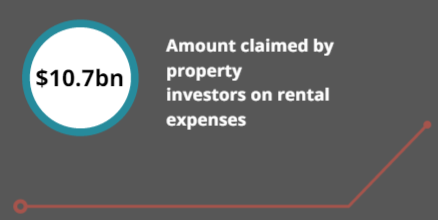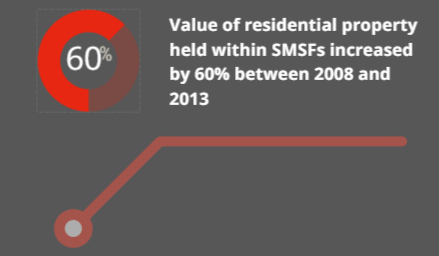Investment in residential real estate is growing in popularity in Australia, which isn’t surprising given our market conditions.
Australia's population growth, favourable taxation regime, historic low interest rates, growth in property values and use of investment properties as a retirement asset are all contributing to this popularity.
This blog shows some of the key residential property investment statistics that have been prevalent recently.
It can help explain and also demonstrate this popularity, and also contains useful links to other resources, downloads and on-demand webinars to help you with your property investment.
Introduction
Many Australians consider their investment property as a source of long term and sustainable income, and approximately 1.9 million of our population of 23 million own one or more investment properties.
Those that do decide to start their property investing journey may do so for lots of different reasons.
Perhaps the most stand-out feature of real estate investment in terms of creating wealth is the ability for long term capital growth. Purchase a property for $200,000. After 10 years, it will be worth:
- 5% Capital Growth $326,000
- 10% Capital Growth $519,000
- 15% Capital Growth $810,000
Keeping in mind that as a property investor, during this period of wealth creation your property investment portfolio can be continually earning you income in the form of rental yields too, it is easy to see that real estate can be a great way to implement a wealth creation plan and give you excellent, long term outcomes.
Number of dwellings rented from private landlords
There are approximately 9 million residential dwellings in Australia, and almost 25% of them are rented from private landlords, according to the Australian Bureau of Statistics (ABS), Residential Dwellings: Values, Mean Price and Number by State and Territories.

Property Investment Finance
One of the outcomes of this growing popularity is the amount of housing loans, specifically for property investment.
According to Australian Bureau of Statistics (ABS), Housing Finance Commitments Australia, July 2015, the amount for investment purposes has reached $13.8 billion, which is over double the amount from July 2010.

You can learn more about property investment finance in this on-demand webinar.
Claiming property investment related expenses
As a property investor, it is essential that you claim as many deductions as you are legally entitled to.
In 2012 - 2013, $10.7 billion was claimed in rental property expenses, excluding loan interest, depreciation and agent commission, according to ATO statistics.
You can learn more about the typical expenses associated with property investment in this blog post.

Impact of interest rates on property investment
Interest rates represent your income as a depositor or your cost of funds as a borrower.
The level of interest rates will dictate to some extent the capacity and enthusiasm of investors to purchase investment property.

While the Reserve Bank sets the prevailing official cash rate, interest rates for home finance are also influenced by market forces, both local and international, and as a consequence banks will require smaller or larger lending margins depending on market risk factors, creating additional volatility in interest rate levels.
According to the RBA Indicator Lending Rates, the average standard variable interest rate reached 5.45% in September 2015.

Increasing property values
Perhaps the most stand-out feature of property investment in terms of creating wealth is the ability for long term capital growth.
According to ABS, Residential Property Price Indexes: Eight Capital Cities, March 2015, property prices have increased 68% since Q1 2004.

Increase in popularity of self-managed super funds
A self-managed super fund is defined as a fund established by one to four people for the sole purpose of providing retirement benefits.
While SMSFs enjoy the same financial benefits and concessions as retail, corporate or industry super funds, the key difference and the attraction for many people is the ability for members to take personal control of the assets invested.

ATO Self-managed Super Fund Statistics, show that the number of self-managed super funds registered each week in Australia is now over 1000, with the total number of SMSFs now over 500,000, with more than 1 million members.

7% of self managed super funds now hold residential property as an asset, whilst the value of residential property held within SMSFs has increased by 60% between 2008 and 2013.

Availability of new and off-the-plan dwellings
Purchasing property off-the-plan means entering a contract to buy the property before or during its construction, so you can view the design and building plans but you won’t be able to inspect the finished property until construction is complete.
Change in foreign investment laws
In 2008, the Australian Federal Government announced policy changes, making it easier for overseas purchasers to buy property in Australia. One of the results of this policy change has seen overseas buyers purchasing more off-the-plan property.

You can learn more about the pros and cons of buying off-the-plan investment property in this free eBook guide.
Building Approvals

According to ABS, Building Approvals, Australia, Jul 2015, there were 216,000 new dwelling approvals in 2014 - 2015, whilst 47% of these approvals were comprised by dwellings in multi-unit buildings.
Building approval statistics are relevant for property investors because they have an impact on the relationship between demand and supply.

Generally speaking, if there are a large number of buyers when the levels of supply are low, increased competition is created, leading to price growth.
Conversely, when supply is high buyers have more choice and prices are discounted.
Learn more about buying property at a discount in this blog post or view an infographic with some discount property investment tips here.
We hope you have found this blog useful and the stats and trends interesting.
Please add your own in the comments section below or if you have any suggestions of others we should include please let us know and we will look into it.
Thanks for reading as always.
- Australian Bureau of Statistics (ABS), Residential Dwellings: Values, Mean Price and Number by State and Territories
- Australian Taxation Office (ATO), Tax Statistics
- Australian Bureau of Statistics (ABS), Housing Finance Commitments Australia, July 2015
- Australian Bureau of Statistics (ABS), Residential Property Price Indexes: Eight Capital Cities, Mar 2015 (weighted average of 8 capital cities)
- ATO, Self-managed Super Fund Statistics
- ABS, Building Approvals, Australia, Jul 2015
- Reserve Bank of Australia, Indicator Lending Rates
- RBA, Statement on Monetary Policy, May 8th 2015
.png)





.png?width=229&height=115&name=RE%20Investar-Logo-MRI_Colour%20web%20229x115px%20(1).png)